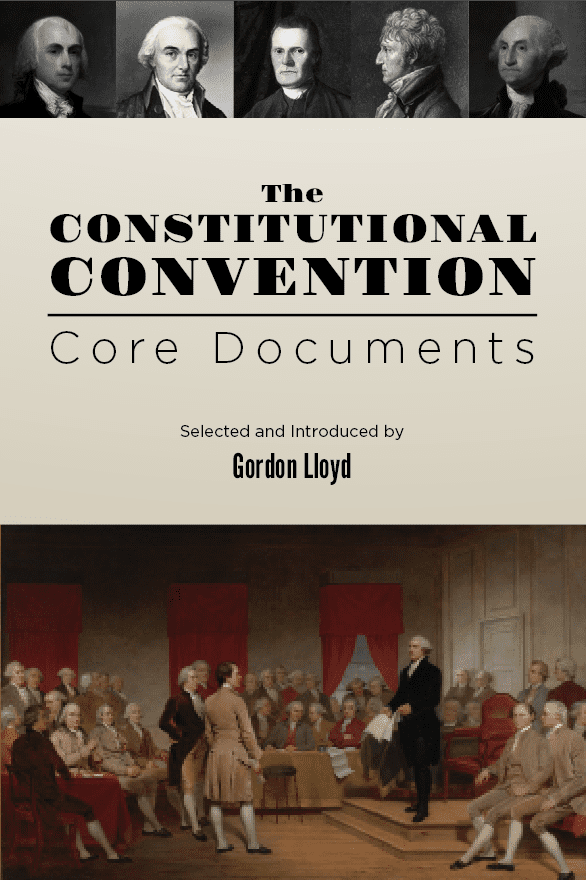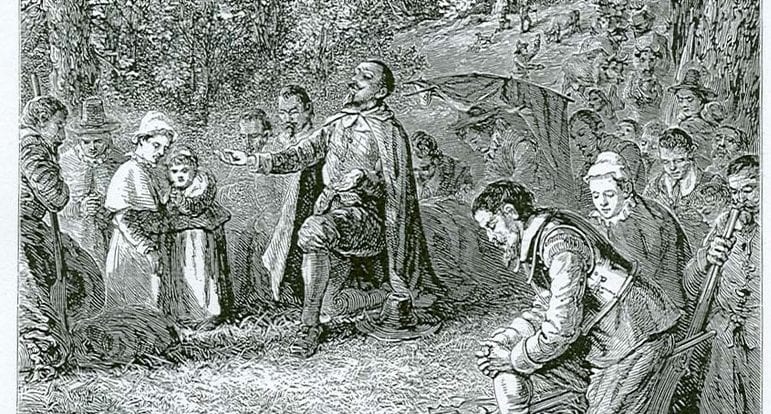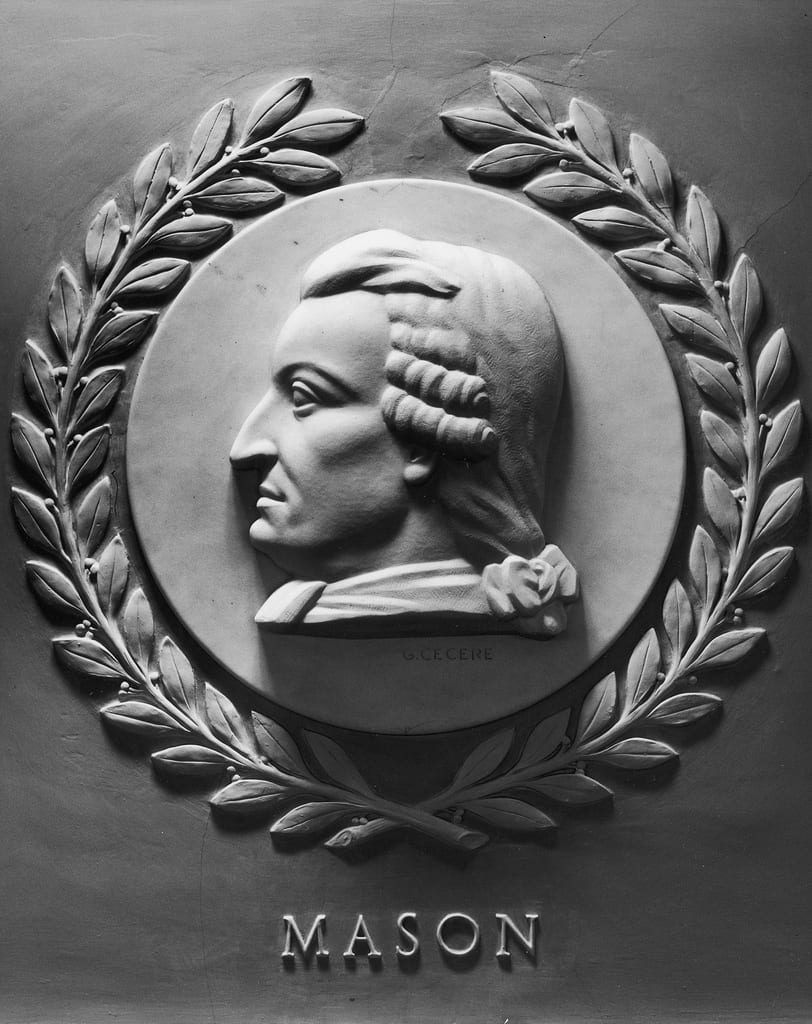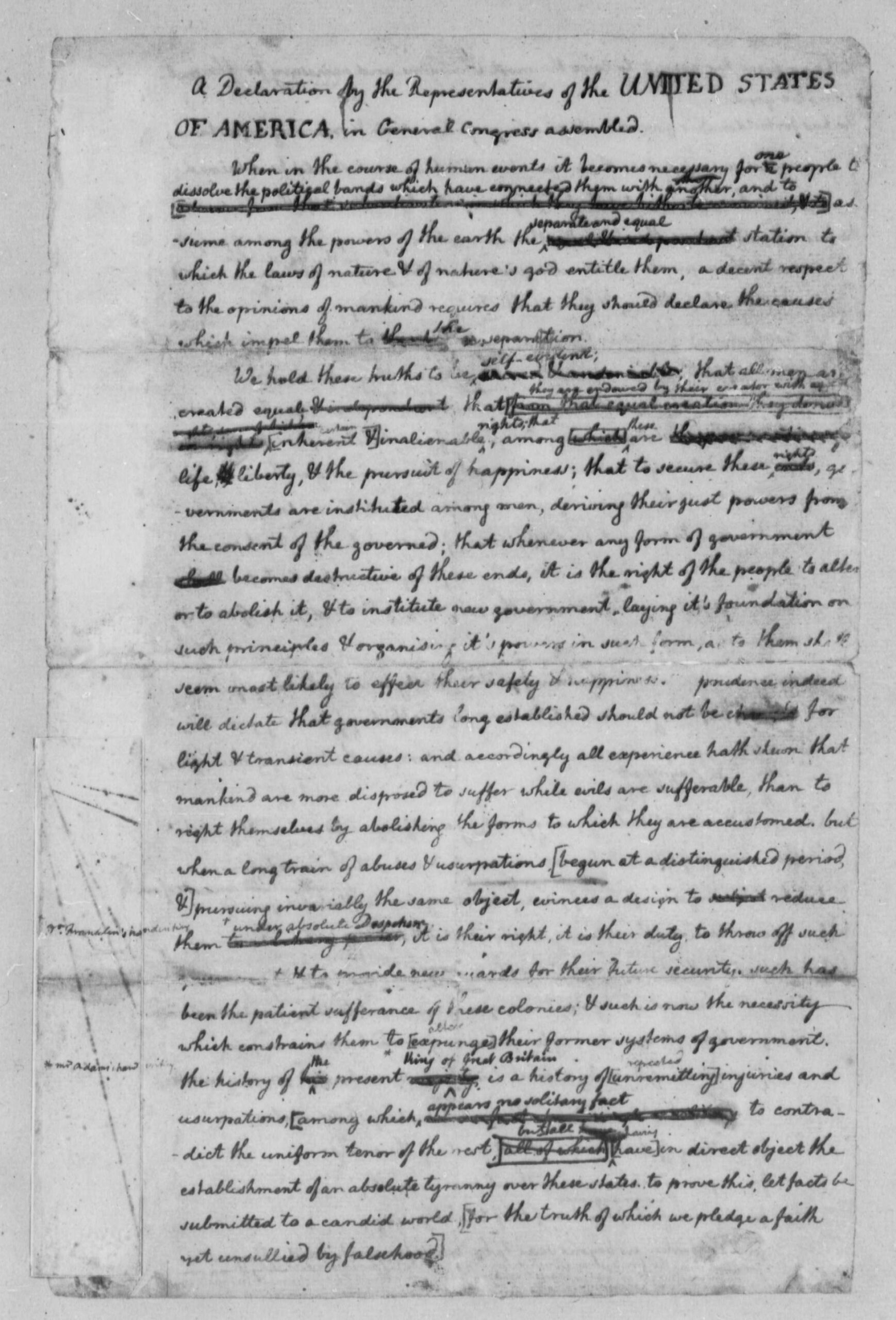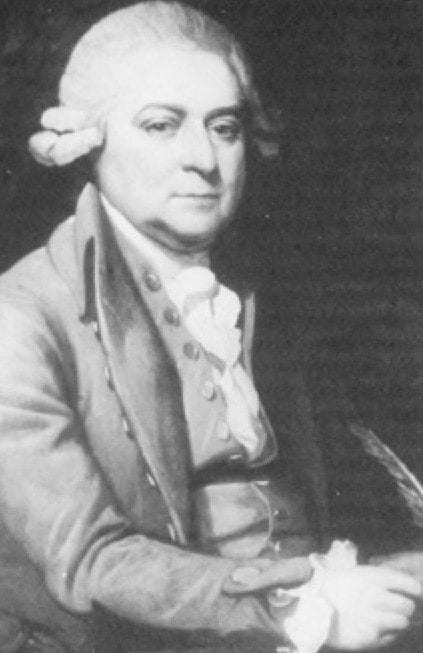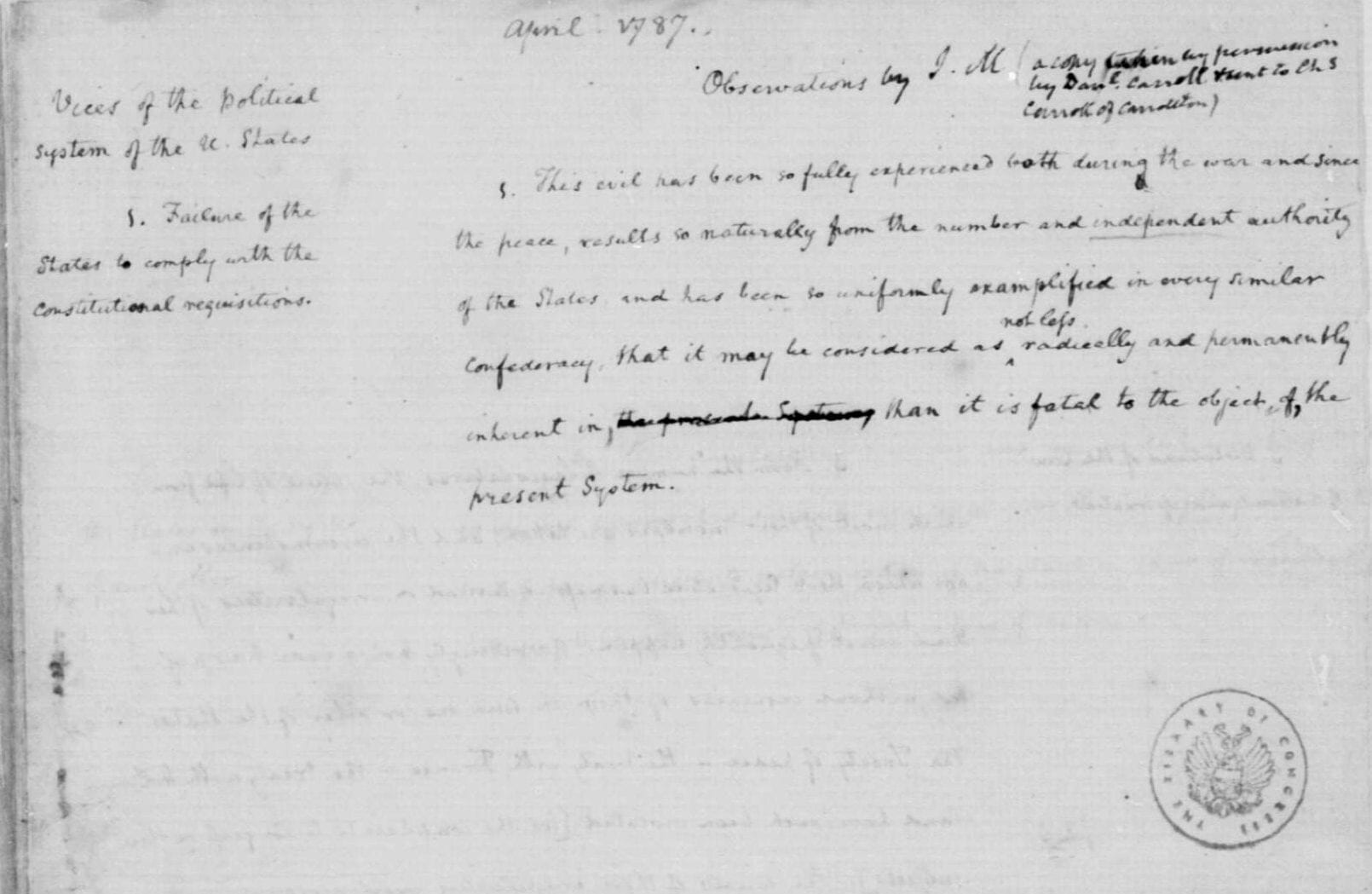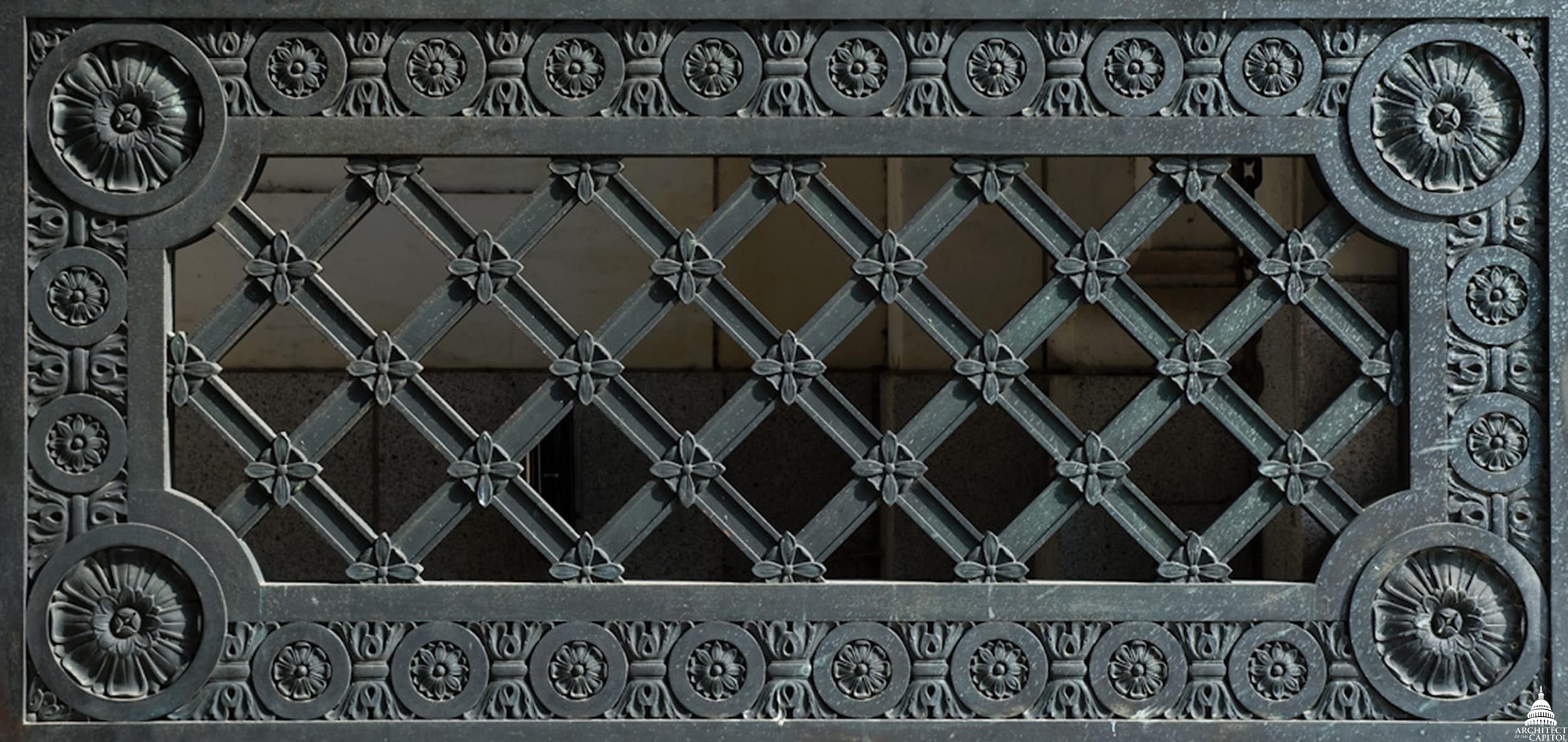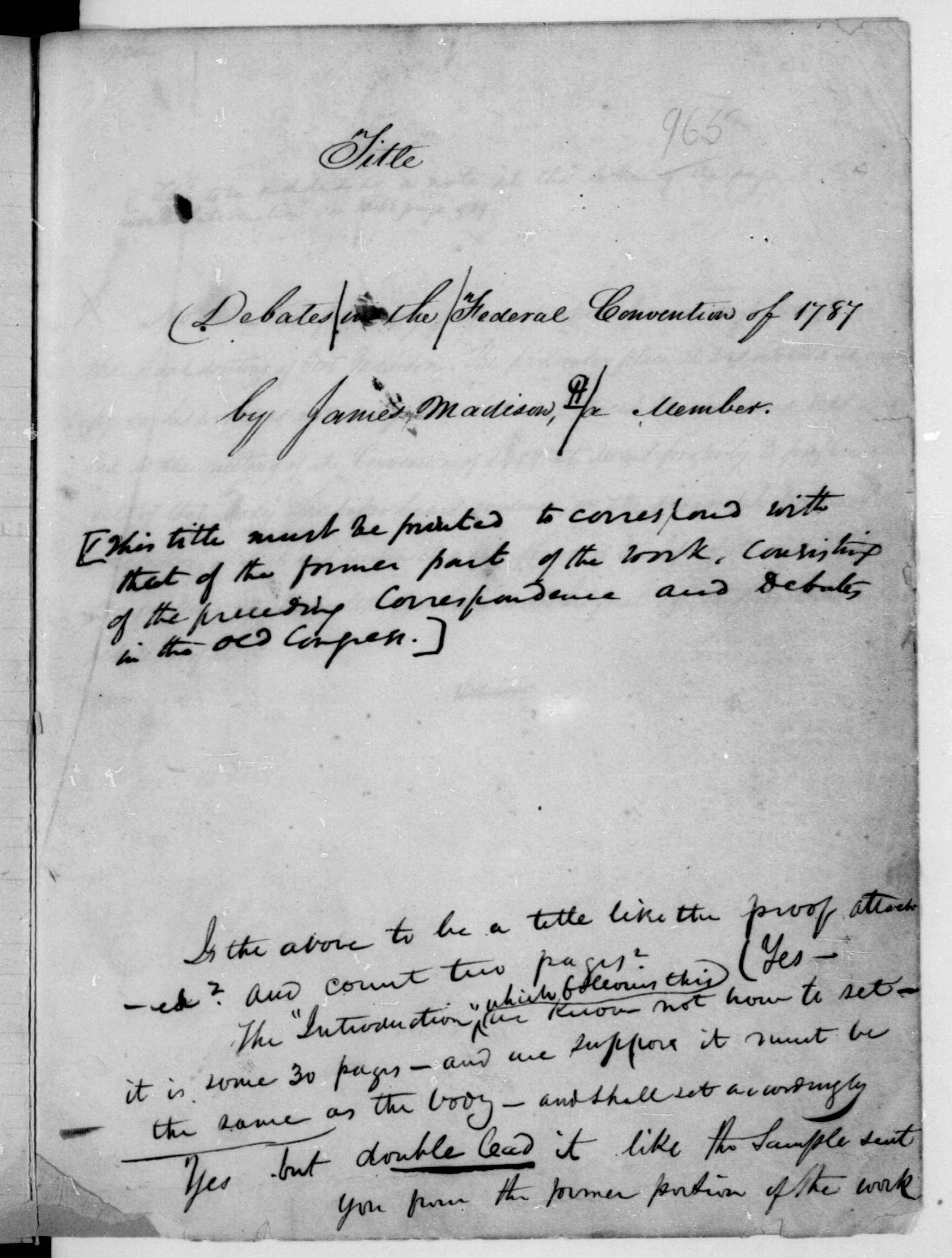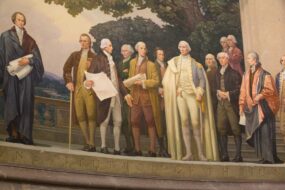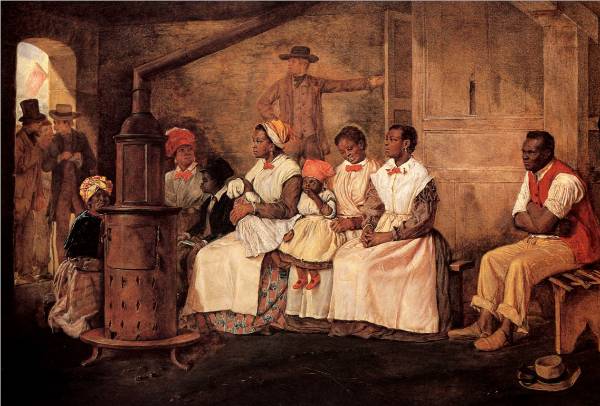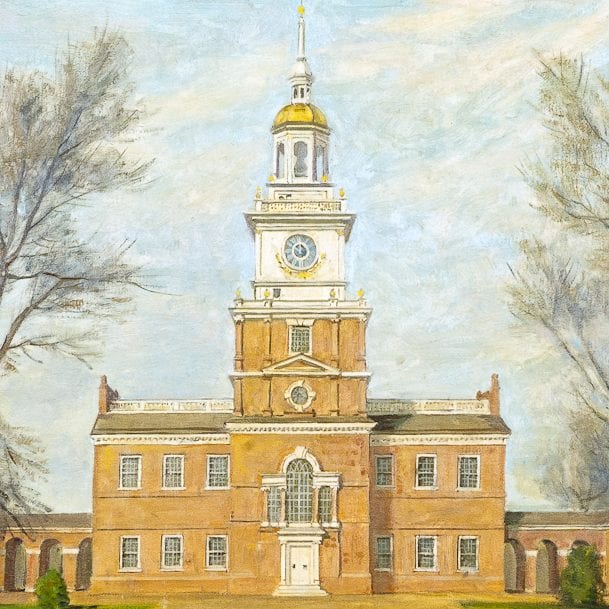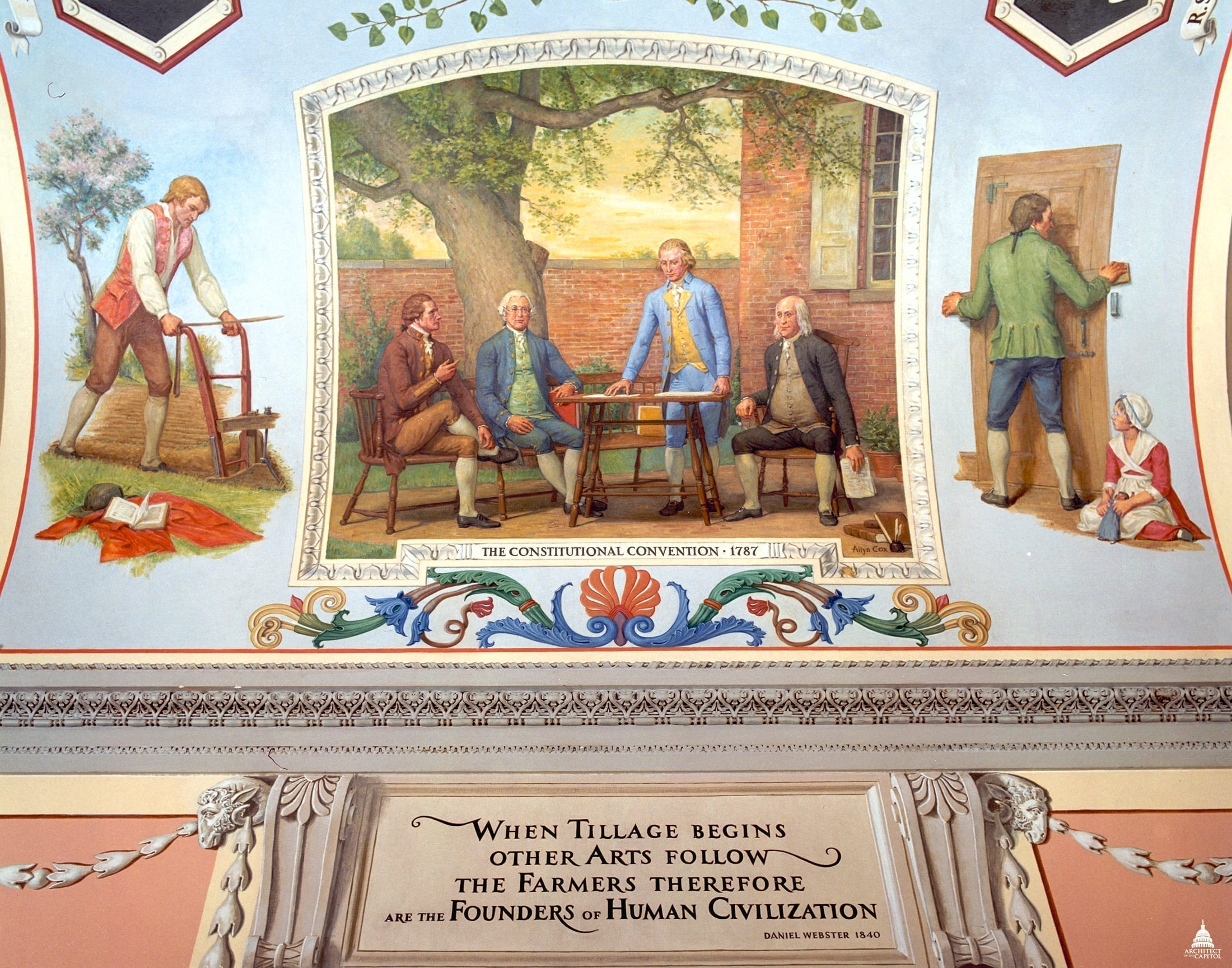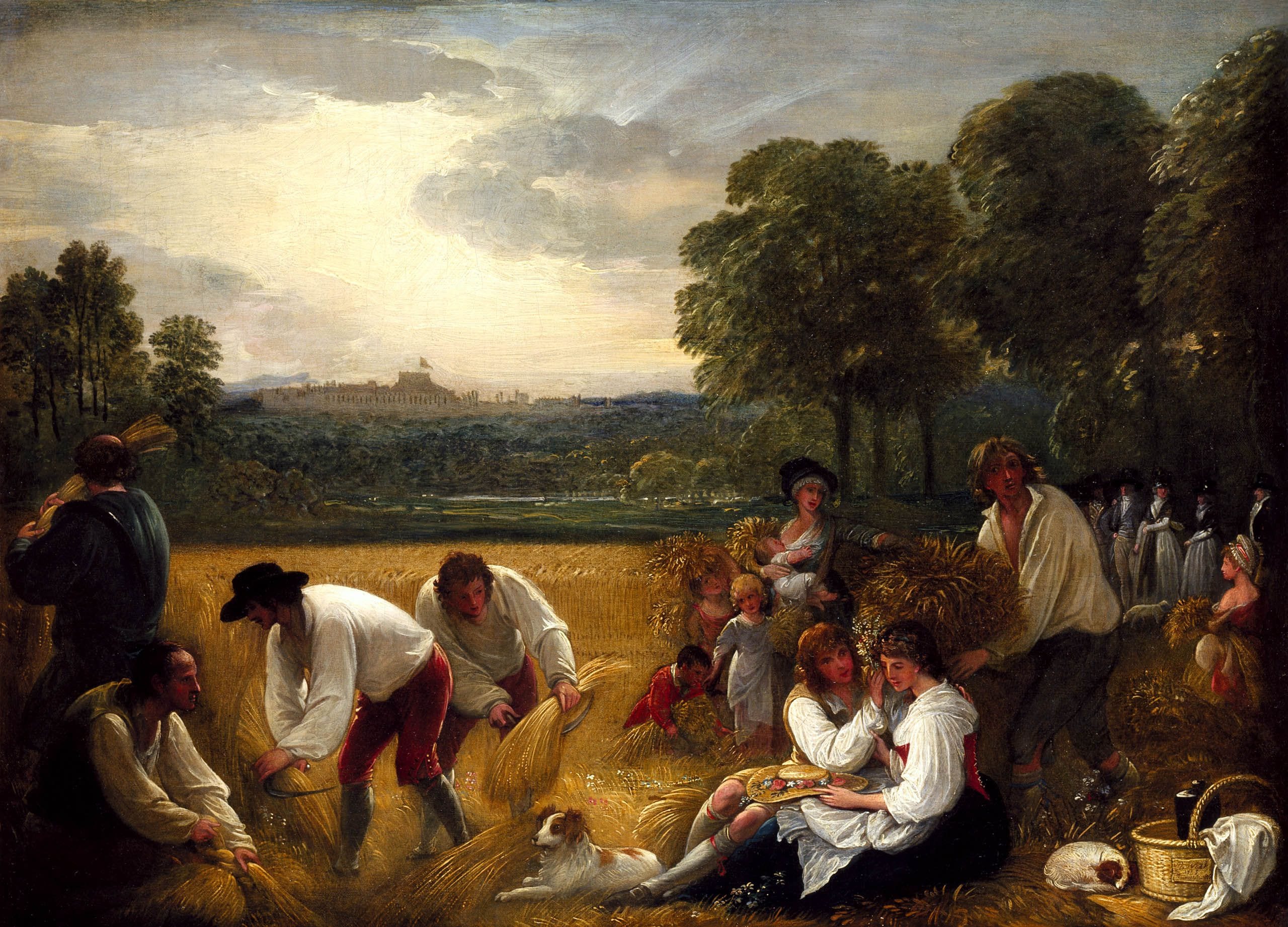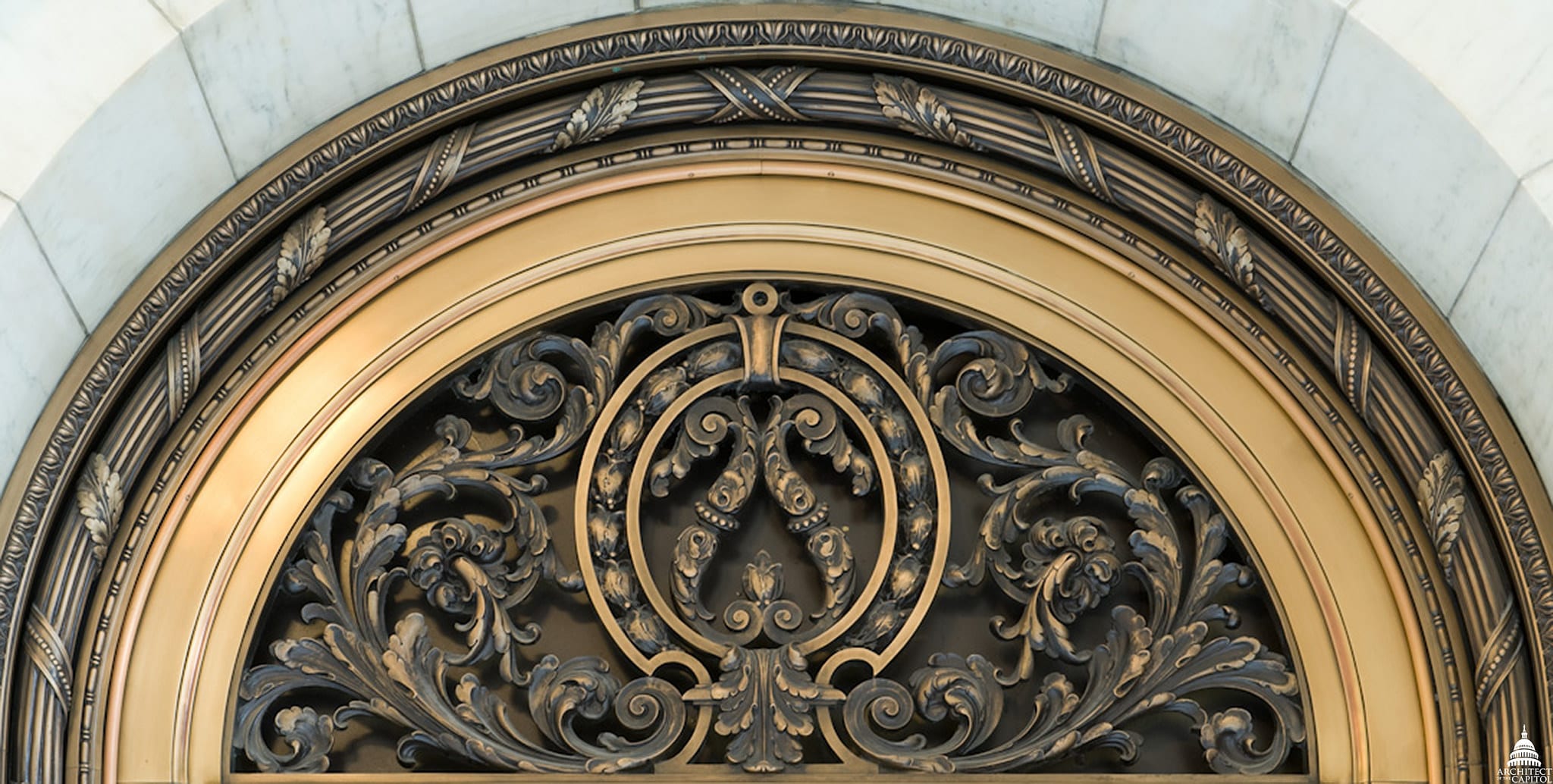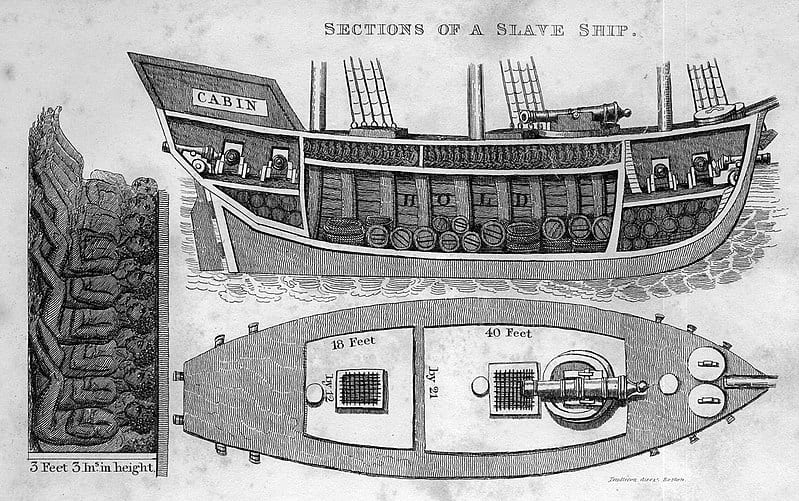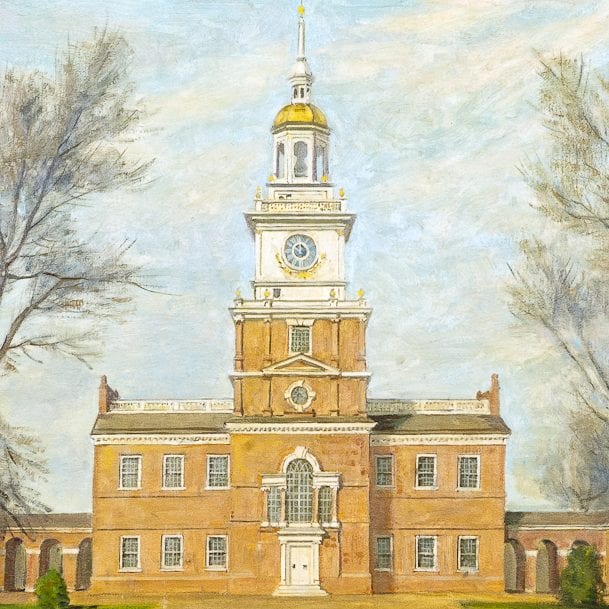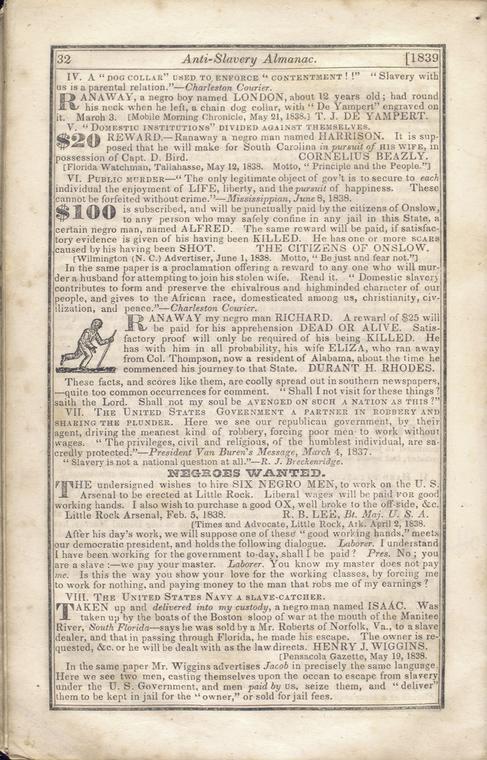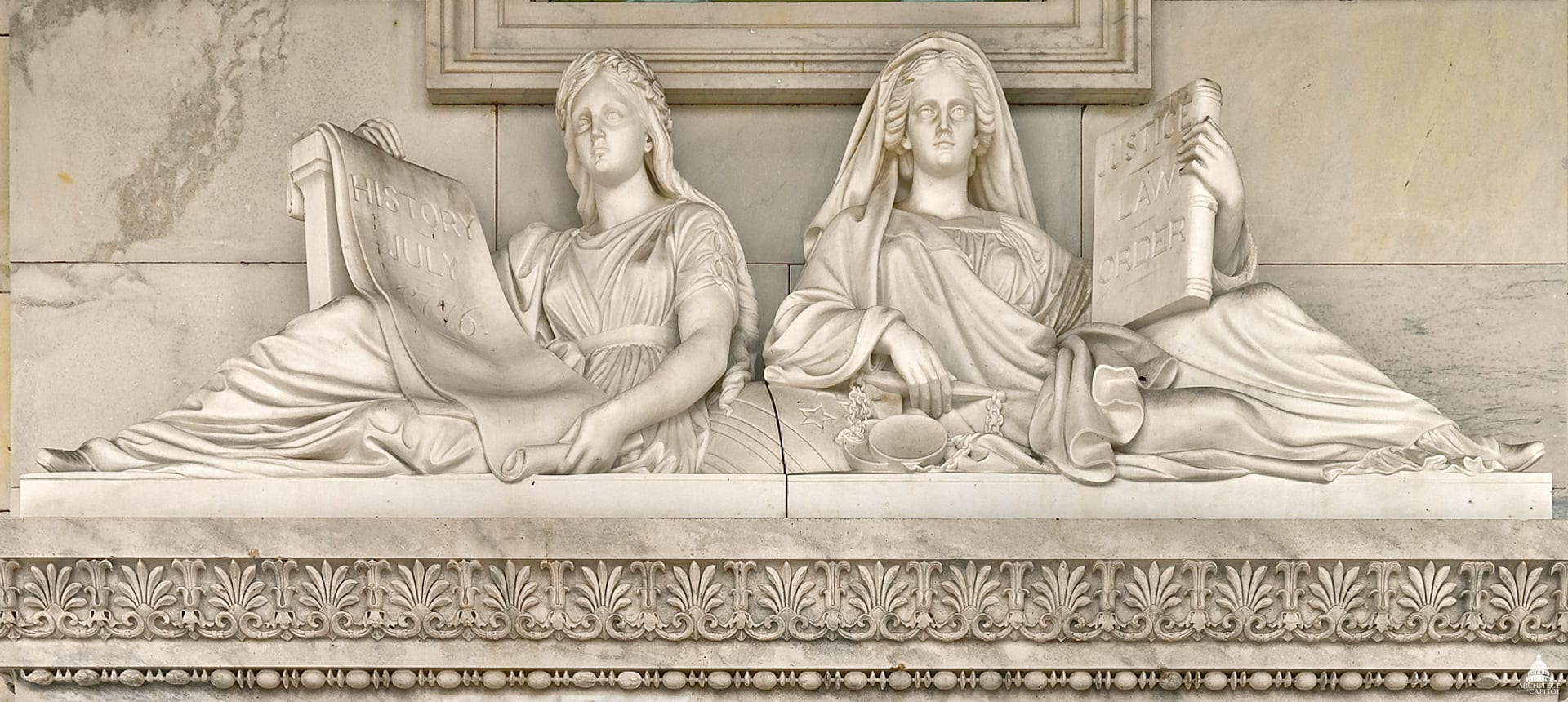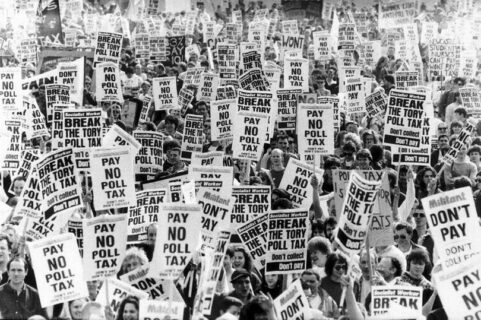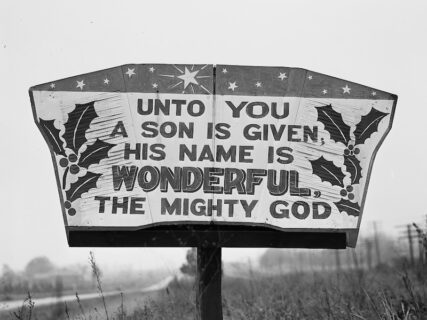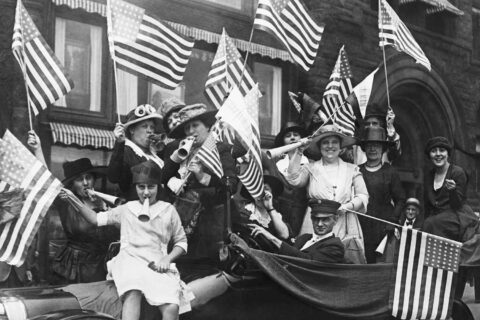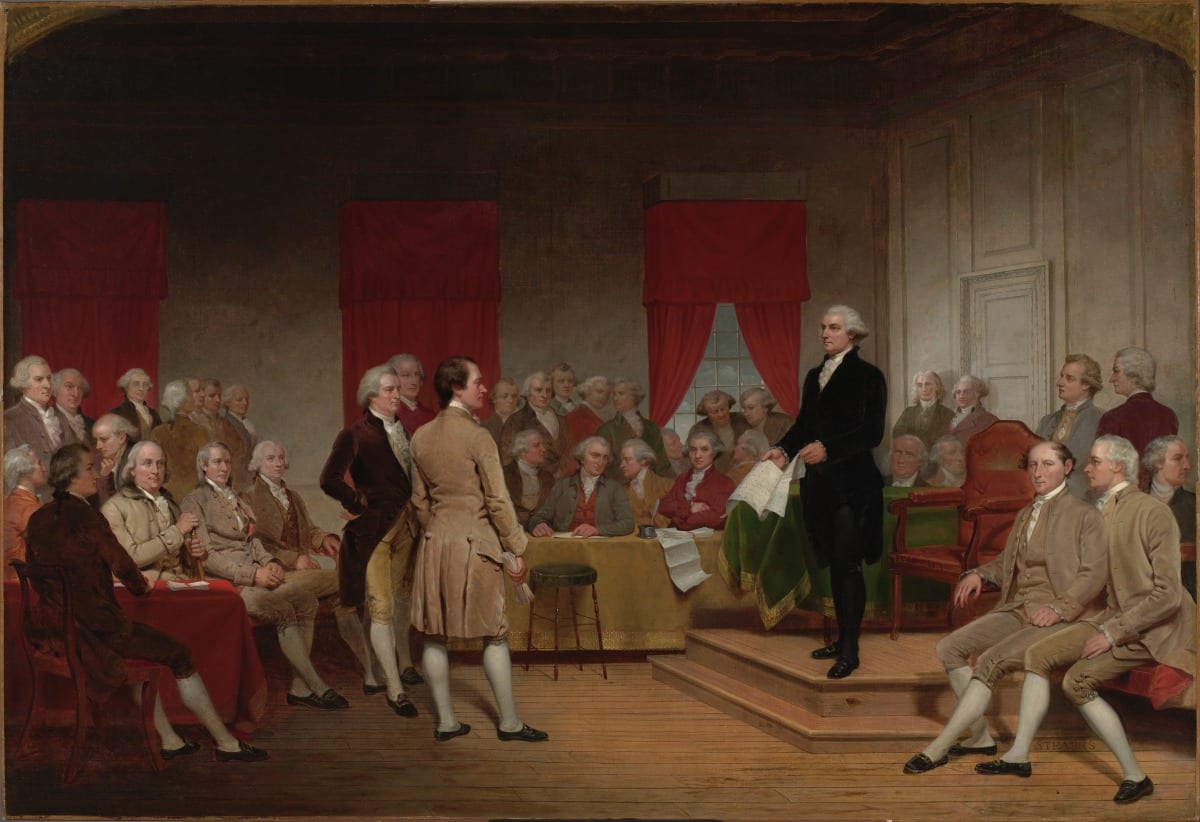
Constitutional Convention
The American founding occurred through the civil deliberations of citizens from a variety of backgrounds, representing a variety of regional interests and philosophical positions.
This collection of documents on the creation of the Constitution attempts to accomplish five objectives.
First, it draws attention to the American colonial experience. Why study the colonial past? Beginning with the French Revolution (1789–99), which ended in a dictatorship, revolutions have tended to ignore the past as a source of authority for the present and as a guide to the future. Americans, while acknowledging the importance of 1776 as the start of something new, showed a decent respect for the opinions and actions of their forefathers from the seventeenth and eighteenth centuries. In particular, they showed a concern for the forms of government under which they had lived. To secure these forms, charters were created and then signed by their creators. Two colonial charters (The Fundamental Orders of Connecticut (1638–39) and The Pennsylvania Charter of Privileges (1701)) highlight the connection between the colonial experience of developing forms of government and the Constitution written in 1787, which continues to structure our government and laws today.
Second, this collection draws attention to the problems Americans confronted during the 1780s. Between 1776 and 1780 (Virginia Declaration of Rights and Constitution (June 12 and 29, 1776) and Articles of Confederation (1781)), Americans created a new kind of republicanism at the state level after due deliberation by elected representatives. Each of these republican forms had its own peculiarity, but all shared the premise that there should be a separation of powers, with the legislative branch being dominant, the executive branch dependent on the legislative, and the judicial branch practically nonexistent. (Massachusetts was a notable exception: its executive was elected by the people and the judiciary could issue advisory opinions.) These republican governments existed alongside a federal government of limited powers, established in 1781 (Articles of Confederation (1781)), whose legislative sessions were irregularly attended by state delegates. The documents thus highlight the problem of active and powerful state governments operating within a league with limited ability to direct the mutual affairs of its members. “Vices of the Political System…” is James Madison’s account in 1787 of the vices of this political system.
Third, the collection addresses how the delegates to the Constitutional Convention responded to the problems in the American political system. What should be done to correct them? Should the powers of the Confederation be increased and the structure kept the same? Was there an intrinsic problem – a systemic deficiency – or a problem that could be settled with a few improvements here and there? And who should authorize changes and by what authority should these alterations be adopted? Thus the collection introduces the reader to the several alternative plans discussed over 88 days at the Convention by up to 55 delegates (for example, The Virginia Plan (May 29, 1787), The Revised Virginia Plan and the New Jersey Plan (June 13 and 15, 1787), and The Hamilton Plan (June 18, 1787)).
Fourth, the collection allows the reader to grasp the personal dynamics at work during the Convention. Some delegates were eloquent and thoughtful; others petulant and shortsighted. Some stayed until the end, revising their views as the debates continued; others stuck to their original positions, leaving early in frustration. Still others rode out the entire convention, announcing only at the last minute the scruples that prevented them from signing the agreed-upon plan. Put differently, for the first time in the history of the world, a genuine democratic conversation took place over an attempt to secure a regime dedicated to liberty and justice. All previous regimes had been founded by one or a few persons and eventually collapsed because of the violence of faction. And none of these previous regimes had sought liberty as a defining principle. To reveal the personal dynamics and what was at stake, the collection covers the debates during several crucial days in the life of the Convention as well as the difficulty involved over the creation of the presidency and the meaning of the necessary and proper clause. Is the case for executive independence the same as the case for judicial independence? Is the necessary and proper clause an enabling or a restraining clause?
Fifth, the collection addresses the clauses of the Constitution that refer to slavery, which provoked controversy at the Convention and have continued to do so ever since. The collection traces the origin and development of the three slavery clauses of the Constitution: the Three-Fifths Clause; the Slave Trade Clause; and the Fugitive Slave Clause. When and why did these three clauses appear during the constitutional debates? How does the language used when the clauses were introduced change before their insertion in the Constitution? How do these changes affect the interpretation of the slavery clauses?
Thirty-nine delegates signed their names to the Constitution on the “Seventeenth Day of September in the Year of Our Lord one thousand seven hundred and Eighty seven and of the Independence of the United States of America the Twelfth.” The conscious attempt to join together the old and the new represents an example of the American mind at work. We wonder whether the colonists of the seventeenth and eighteenth centuries would have recognized and applauded the work of the Founding Fathers? To be sure, even though several of the Framers of the Constitution had different ideas about what should be done to secure the blessings of liberty – see the variety of plans – 39 reached sufficient agreement through a mixture of principle and compromise to sign the document. Aristotle might well call that prudent statesmanship. Others might well criticize their compromising as unacceptable and embarrassing.
But we need to remember that, unlike previous foundings in history that were the work of powerful individuals who could enforce their will, the American founding occurred through the civil deliberations of citizens from a variety of backgrounds, representing a variety of regional interests and philosophical positions. Never before had such a task been accomplished.
A Note on Usage
We have modernized spelling and some punctuation but not capitalization. On occasion we have divided longer speeches into paragraphs.
In recording the debates at the Convention, Madison uses the terms “house” and “branch” interchangeably with reference to what would become the House of Representatives and the Senate. To modern ears, “branch” connotes the three divisions of our government (legislative, executive, and judicial). However, to respect the language used by Madison and the delegates, in this volume we generally use the term “legislative branches” when speaking of the two houses of Congress.
While a few delegates, following the British way of thinking, used the terms “upper” and “lower” to distinguish between what we call the House and the Senate, most delegates preferred to speak of the House of Representatives as the “first” branch of the legislature and of the Senate as the “second” branch. The terms “upper” and “lower” carried an aristocratic connotation. Madison and many other delegates preferred the more democratic terminology of “first” and “second.”
The Road to the Convention
- The Fundamental Orders of Connecticut (1638–39)
- The Pennsylvania Charter of Privileges (1701)
- Virginia Declaration of Rights and Constitution (June 12 and 29, 1776)
- Thomas Jefferson, Draft of the Declaration of Independence (July 2–4, 1776)
- Massachusetts Bill of Rights (March 2, 1780)
- Articles of Confederation (1781)
- James Madison, “Vices of the Political System of the United States” (April 1787)
- The Two Authorizations (September 1786 and February 1787)
The Constitutional Convention: The Alternative Plans
- The Rules of the Convention (May 28–29, 1787)
- The Virginia Plan (May 29, 1787)
- The Madison-Sherman Exchange (June 6, 1787)
- The Three-Fifths Clause and Federal Representation (June 11, 1787)
- The Revised Virginia Plan and the New Jersey Plan (June 13 and 15, 1787)
- The Two Authorizations Revisited (June 16, 1787)
- The Hamilton Plan (June 18, 1787)
The Constitutional Convention: The Connecticut Compromise
- Partly National, Partly Federal (June 29 and 30, 1787)
- The Gerry Committee Report (July 2 and 5, 1787)
- The Three-Fifths Clause and the Connecticut Compromise (July 11–14 and 16, 1787)
The Constitutional Convention: The Committee of Detail
- The Committee of Detail Report (July 23–24 and August 6, 1787)
- The Slave Trade Clause (August 21,22, 24, and 25, 1787)
- The Judiciary (June 4; July 21; August 15 and 27, 1787)
The Constitutional Convention: The Committee of Detail
- Creating the Electoral College (September 4 and 6, 1787)
- Objections to the Constitution (September 10, 12, 15, and 17, 1787)
- The Fugitive Slave Clause (July 14; August 6, 28 and 29; and September 12, 15, and 17, 1787)
- The Powers of Congress (September 12 and 14, 1787)
- The Signing of the Constitution (September 17, 1787)
For each of the Documents in this collection, we suggest below in section 1 questions relevant for that document alone and in Section 2 questions that require comparison between documents.
The Fundamental Orders of Connecticut (1638–39)
1. On what authority does the Connecticut Orders rely? What structure of government, if any, did the Orders create? Are oaths an important part of enforcing the content of the Orders?
2. Compare and contrast the Orders with other plans of government included in this volume. Use any of the following documents to answer the question.
- The Pennsylvania Charter of Privileges
- Virginia Declaration of Rights and Constitution
- Massachusetts Bill of Rights
- The Virginia Plan
- The Revised Virginia Plan and the New Jersey Plan
- The Hamilton Plan
- The Powers of Congress.
Charter of Privileges Granted by William Penn, Esp., to the Inhabitants of Pennsylvania and Territories (1701)
1. Is there something “constitutional” that is recognizable in this document? Should the 1701 Pennsylvania Charter retain its status through the ages?
2. How is this constitution similar to and different from the “constitutionalism” of other colonial and early state documents? Use any of the following documents to answer the question.
- The Fundamental Orders of Connecticut
- Virginia Declaration of Rights and Constitution
- Massachusetts Bill of Rights
- The Articles of Confederation.
Virginia Declaration of Rights and Constitution (June 12 and 29, 1776)
1. Does it seem curious that (1) the Virginia Declaration and the Virginia Constitution were written two weeks apart and that (2) both preceded the passage of the Declaration of Independence? According to these two documents, what is the purpose of government? What is the role of the Legislature, Executive, and Judiciary in the newly adopted Virginia Constitution? What sort of “republicanism” do these two documents express? Is it surprising that the Bill of Rights precedes the Constitution?
2. By what authority was the Virginia Declaration of Rights and Constitution initiated and adopted? Compare and contrast the Virginia authorization with other authorizations during this period. Use any of the following documents to answer the question.
- The Fundamental Orders of Connecticut
- The Pennsylvania Charter of Privileges
- Massachusetts Bill of Rights
- The Two Authorizations
- The Virginia Plan
- The Two Authorizations Revisited
- The Signing of the Constitution.
Thomas Jefferson, Draft of the Declaration of Independence (July 2–4, 1776)
1. Does Jefferson’s draft convey a substantially different meaning from that of the Declaration of Independence the Continental Congress signed (Appendix D)? Would the less moderate tone of the draft have communicated a different message to the audience outside of America? To American loyalists and those uncertain whether to join the Revolution? Is it likely that the explicit condemnation of slavery would have changed the conversation about slavery at the Founding or during the next 80 years?
2. Is there a parallel between the complaints listed in the draft and the rights to be secured by Virginia Declaration of Rights and Constitution? Are there parallels between the complaints it lists and the rights secured by the Constitution and its first ten amendments?
Massachusetts Bill of Rights (March 2, 1780)
1. How do the Massachusetts Bill of Rights and Constitution provide for religious liberty, economic liberty, and political liberty? What are the roles of the Executive and Judicial branches? How is the Constitution to be ratified?
2. How is the Massachusetts version of republicanism similar to and different from that found in Virginia Declaration of Rights and Constitution, as well as in the earlier colonial documents (The Fundamental Orders of Connecticut and The Pennsylvania Charter of Privileges)?
Articles of Confederation (1781)
1. Is there a central contradiction at the heart of the Articles, given that the union is supposed to be perpetual, “a firm league of friendship,” yet the powers of the union are “expressly delegated”? Is there a separation of powers under the Articles? Why is it significant that the delegates should sign the document? What is the status of the states under the Articles? How is the union to operate under the Articles? What is the difference between a confederation/federation and a national government with respect to: (1) the structure of the institutions and (2) the powers of the union?
2. Compare the Articles to The Virginia Plan, the New Jersey Plan, and the solution proposed in Partly National, Partly Federal.
James Madison, “Vices of the Political System of the United States” (April 1787)
1. Why does Madison argue that the very structure of the Articles of Confederation needs to be altered? What is Madison’s case against the traditional small republic, and how does that argument assist in his critique of the inadequacies of the Confederation?
2. Madison’s critique of the Articles does not assume that republican government will necessarily be supported by the virtue of the governed. How does this critique anticipate The Virginia Plan and The Hamilton Plan? How does it anticipate Madison’s argument in Federalist 10 (see The American Founding: Core Documents, The Slave Trade Clause)?
The Two Authorizations (September 1786 and February 1787)
1. Are the two authorizations compatible? If not, which authorization should prevail? Did the Congress limit the Convention to the discussion of specific and particular matters, or did the Congress empower the Convention to propose whatever alterations the delegates deemed necessary to preserve the principles of the Revolution? Must any plan devised by the Convention require not only the approval of Congress, but approval by all the state legislatures to become law? Is there room in the Congressional endorsement of the Convention for ratification by the consent of the governed?
2. How did the two authorizations enter the debate at the Constitutional Convention of 1787? Use any of the following documents to answer the question.
- The Revised Virginia Plan and the New Jersey Plan
- Partly National, Partly Federal
- The Gerry Committee Report.
Do you see a significant relation between, on the one hand, supporters of the Virginia Plan and those delegates selected according to the Annapolis authorization; and, on the other hand, supporters of the New Jersey Plan and those delegates selected according to the Confederation Congress mandate?
The Rules of the Convention (May 28–29, 1787)
1. How and why is the laying down of rules important for encouraging the subsequent discussion of potentially divisive issues? Do you agree with Jefferson or Madison concerning the adoption of the rule of secrecy? Do you think that consideration of the other rules has been overwhelmed by the secrecy rule?
2. Did these rules have an impact on the nature of the discussion process that took place during the 88 days at the Constitutional Convention? Did the rules inhibit the free exchange of ideas? Compare and contrast with the rules articulated in other documents.
- The Fundamental Orders of Connecticut
- The Pennsylvania Charter of Privileges
- The Articles of Confederation.
The Virginia Plan (May 29, 1787)
1. Do the states have any significant role under the Virginia Plan? The Virginia Plan seems to place significant authority in the national legislature, yet at the same the Council of Revision seems to tilt the balance of power toward the Executive and the Judiciary. Is there a tension at the heart of the Virginia Plan?
2. In what way is the Virginia Plan a radical departure from the Articles of Confederation? Is the vision of republicanism similar to or different from earlier statements of representative government? Use any of the following documents to answer the question.
- The Fundamental Orders of Connecticut
- The Pennsylvania Charter of Privileges
- Virginia Declaration of Rights and Constitution
- Massachusetts Bill of Rights.
The Madison-Sherman Exchange (June 6, 1787)
1. Why does Sherman think that people are happier in smaller communities? Why does Madison disagree?
2. Compare Madison’s argument here against majority faction with the argument he presented in “Vices of the Political System of the United States”. Why does the intent and success of the Virginia Plan turn so much on the case for the extended commercial republic? What does Madison include in his list of items as examples of majority faction? See “Vices of the Political System of the United States” and The Virginia Plan.
The Three-Fifths Clause and Federal Representation (June 11, 1787)
1. What were the arguments in favor of including the Three-Fifths Clause in the scheme of representation in the first branch? Why was there resistance to including the clause in the second branch? What role did Madison and Sherman play in response to the introduction of the Three-Fifths Clause?
2. How did the introduction of the Three-Fifths Clause alter the conversation over representation of the people or representation of the states? Compare this model with any of the following documents.
The Revised Virginia Plan and the New Jersey Plan (June 13 and 15, 1787)
1. How is the New Jersey Plan a rejection of the Revised Virginia Plan? How are we to interpret Dickinson’s remark that it was Madison’s unwillingness to compromise that brought about this breakdown in negotiations. Where does the Three-Fifths Clause fit in to the two documents? Can we say that these two documents show it is pretty clear that the key debate is between the small states and the large states?
2. Is the Revised Virginia Plan pretty much the same as the original Virginia Plan? Is the New Jersey Plan pretty much the same as the Articles of Confederation?
The Two Authorizations Revisited (June 16, 1787)
1. What is the main defense of the New Jersey Plan? How do the supporters of the Revised Virginia Plan respond? Who, if any, of the delegates are acting like statesmen in this exchange? Are we witnessing an exchange that pits advocates of the rule of man made law against delegates who appeal to a higher law?
2. How do the documents in the two authorizations play a part in discussions over the support for or rejection of the New Jersey Plan and the very legality and propriety of the Convention itself?
The Hamilton Plan (June 18, 1787)
1. Hamilton suggests that his plan is still within the proper sphere of both republicanism and federalism, rather than being a reformulation of monarchy and nationalism. Does his plan support his claim? Do the states have any role under his plan? Has he elevated the presidency to a position of greater importance than the governors of the states?
2. Compare and contrast Hamilton’s position on the separation of powers with that found in any of the following documents.
- The Virginia Plan
- The Revised Virginia Plan and the New Jersey Plan
- The Committee of Detail Report).
Partly National, Partly Federal (June 29 and 30, 1787)
1. When Ellsworth argues on behalf of equal representation of the states in the Senate, is he offering a principled compromise? Is Madison’s argument that the great divide in American politics is the issue of slavery persuasive? How does the Three-Fifths Clause become part of the discussion of representation? What role did Madison and Sherman play in response to the introduction of the Three-Fifths Clause?
2. How is this discussion over the “partly national, partly federal” character of the union similar to and different from earlier and later discussions of the issue of federal representation? When Sherman previously argued on behalf of equal representation of the states in the Senate (see The Revised Virginia Plan and the New Jersey Plan), was he arguing from principle? How does the debate on June 29 and 30 influence the later discussion of the Three-Fifths Clause?
The Gerry Committee Report (July 2 and 5, 1787)
1. Students of the American Founding are usually introduced to the partly national, partly federal nature of the Constitution through reading Federalist 39. In that essay, it is not completely clear where Madison (writing as Publius) stands on the five tests of federalism and nationalism to which he subjects the Constitution. At the Convention, Madison argues that the partly national, partly federal solution is unprincipled; what is his argument? Who at the Constitutional Convention understood the partly national, partly federal solution to rise to the level of principle, albeit a newly discovered principle? What kind of compromise is a 5–4–1 vote with three absent?
2. Reflect on the “dynamics” of the Convention between May 28 and the Report of the Gerry Committee. Who has “won,” and who has “lost” – or has everyone actually won by the time we get to July 16?
The Three-Fifths Clause and the Connecticut Compromise (July 11–14 and 16, 1787)
1. Is it surprising that the South Carolina delegates want to count slaves as “five-fifths” of a person? Do they offer any logical grounds for this position? Why is the Three-Fifths Clause embedded in a discussion about the “scheme of representation” appropriate for a federal republic?
2. Do the arguments between July 11 and 16 on the representation of people, states, and wealth mirror and flesh out the discussions on June 11, June 29, and June 30, or do they break new ground? Use either of the following documents to answer the question.
The Committee of Detail Report (July 23–24 and August 6, 1787)
1. From which states were the five delegates chosen? Does this matter? What strikes you as novel and what as traditional in this draft of the Constitution? Were there any changes made to the Connecticut Compromise that settled the structural, or representative, question? How does the Committee of Detail propose that the Constitution be adopted and altered?
2. Compare and contrast the powers of Congress listed in the Committee of Detail Report with the powers of Congress found in:
The Slave Trade Clause (August 21,22, 24, and 25, 1787)
1. In what way did the Committee of 11 alter the Report of the Committee of Detail concerning the slave trade? Who was on that committee who was not on the Committee of Detail? Did the delegates who voted against the 1808 compromise want a date of “never” or of 1800?
2. Why did it take until the end of August to consider the slave trade clause? Does this clause resolve issues raised by Sections 4, 5 and 6 of Article VII of the Committee of Detail Report? How does the Fugitive Slave Clause temper our understanding of the Founders’ expectation that the institution of slavery would end?
The Judiciary (June 4; July 21; August 15 and 27, 1787)
1. The phrase “judicial review” does not appear in the Constitution. Can a reasonable case nevertheless be made that the Framers wanted to secure “subsequent review” of public policy but not “prior review” of public policy? What clause in the Constitution might reasonably be interpreted to grant judicial review to the Supreme Court? Is it surprising that Madison initially wanted a robust role for the judiciary but then expressed reservation at Johnson’s proposition about the role of the judiciary. How does the discussion over the Council of Revision fit into the debate over the reach of the judiciary and the power of the executive?
2. The creation of the Judiciary went through several “enhancements” during the debates of the Convention. What were the critical developments that were and were not made concerning the status of the Judiciary from the Articles of Confederation to the state constitutions through the various plans presented to the Convention? Use any of the following documents to answer the question.
- Massachusetts Bill of Rights
- Articles of Confederation
- The Virginia Plan
- The Revised Virginia Plan and the New Jersey Plan
Creating the Electoral College (September 4 and 6, 1787)
1. What role did Madison and Sherman play in the final construction of the Electoral College? What evidence is there to support the claim that the Electoral College reflects an opposition to the role of the people in directly electing the president? Does the Connecticut Compromise play a role in the compromise over the election of the president?
2. Compare and contrast the Electoral College with earlier proposals for the election of the president. Use any of the following documents to answer the question.
Objections to the Constitution (September 10, 12, 15, and 17, 1787)
1. Do Randolph, Gerry, and Mason have similar reasons for declining to sign the Constitution? Do they share a central concern about the Constitution? Other delegates had reservations, yet they still signed; do Randolph, Gerry, and Mason expect a kind of perfection that would have been impossible? Or does their dissent demonstrate an admirable feature of the American experiment?
2. Prior to this point, other delegates have dissented to decisions made during the 88 days of the Constitutional Convention. See, for example, Patterson’s introduction of the New Jersey Plan, Sherman’s objection to the Virginia Plan for representation in the Senate, Hamilton’s introduction of his own plan, and Madison’s refusal to vote for the Connecticut Compromise. Does it strike you as odd that Randolph, who introduced and defended the Virginia Plan, objected to signing the Constitution? What is so different about these three dissents from other objections?
The Fugitive Slave Clause (July 14; August 6, 28 and 29; and September 12, 15, and 17, 1787)
1. What is the significance of the change in language from “justly” to “legally” to “under the laws thereof”? Why is the Fugitive Slave Clause located right under the Extradition Clause in the Constitution? Is there a significant difference between the language of the Fugitive Slave Clause and the Extradition Clause?
2. Do the Fugitive Slave Clause and the Three-Fifths Clause contradict the claim in the Declaration of Independence that all men are created equal? How do the discussions of these provisions in the Constitutional Convention address that question? What do the inclusion of these clauses and the inclusion of the ban on the slave trade tell us about the relationship between the Declaration and the Constitution?
The Powers of Congress (September 12 and 14, 1787)
1. Should the inclusion of the general welfare and common defense clauses in both the Preamble and Article I, Section 8, have an influence on how to read the “necessary and proper” clause? Based on the exchange between the delegates on September 14, is the “necessary and proper” clause, in their opinion, an elastic clause or a confining clause?
2. Is the “necessary and proper” clause a constitutional compromise, one somewhere between the Virginia Plan disposition not to enumerate any congressional powers at all and the concern of the New Jersey Plan to limit the reach of Congress to those items expressly itemized? On August 6, the Committee of Detail presented the first draft of the Constitution. How are the enumerated powers similar and different in the Committee of Detail Report and the Committee of Style Report (The Powers of Congress)? Is the general welfare clause in both documents? Is it in the Articles of Confederation?
The Signing of the Constitution (September 17, 1787)
1. Is it disappointing or a relief that the Framers signed a “more perfect” Constitution rather than a perfect Constitution? Do you agree with Franklin that with the closure of the debates there are serious reasons for optimism rather than pessimism regarding the future of the country? Why did Washington attempt to reconcile Randolph? What are we to make of the phenomenon of “signing” that permeates the American experience?
2. What would (1) Madison, (2) Randolph, (3) Patterson, and (4) Hamilton consider to be an even more perfect union than the Constitution? Use any of the following documents to answer the question.
Banning, Lance. Jefferson and Madison. Madison, WI: Madison House, 1995.
Beeman, Richard. Plain, Honest Men: The Making of the American Constitution. New York: Random House, 2009.
Bloom, Sol. History of the Formation of the Union under the Constitution. Washington, DC: Government Printing Office, 1937.
Bowen, Catherine Drinker. Miracle at Philadelphia. New York: Little, Brown, 1966.
Brandt, Irving. James Madison: Father of the Constitution 1787–1800. Indianapolis: Bobbs-Merrill, 1950.
Commager, Henry Steele, ed. Documents of American History. New York: Appleton-Century-Crofts, 1968.
Deane, Charles, ed. History of Plymouth Plantation by William Bradford. Boston: Privately printed, 1856.
Farrand, Max, ed. The Records of the Federal Convention. New Haven: Yale University Press, 1966.
Ferris, Robert, ed. Signers of the Constitution. Washington, DC: National Park Service, 1976.
Ford, W. C., ed. Journals of the Continental Congress: 1774–1789. Washington, DC: Government Printing Office, 1904.
Gales, Joseph, Sr., ed. Annals of Congress. Washington, DC: Government Printing Office, 1834.
Handlin, Oscar, and Mary Handlin, eds. The Popular Sources of Political Authority: Documents on the Massachusetts Constitution of 1780. Cambridge, MA: Belknap Press of Harvard University Press, 1966.
Hening, W. W. Statutes at Large. Richmond, VA: George Cochran, 1823.
Hunt, Gaillard, ed. The Writings of James Madison. New York: G. P. Putman’s Sons, 1900–1910.
Hutchinson, William T., et al., eds. The Papers of James Madison. Chicago: University of Chicago Press, 1961.
Hyneman, Charles S., and Donald S. Lutz, eds. American Political Writings During the Founding Era. 2 vols. Indianapolis: Liberty Press, 1985.
Jensen, Merrill. The Articles of Confederation: An Interpretation of the Social-Constitutional History of the American Revolution, 1774–1781. Madison: University of Wisconsin Press, 1970.
Kurland, Philip B., and Ralph Lerner, eds. The Founders’ Constitution. Chicago: University of Chicago Press, 1987.
Lloyd, Gordon, ed. Debates in the Federal Convention of 1787 by James Madison, a Member. Ashland, OH: Ashbrook Center, 2014.
Lloyd, Gordon, and Margie Lloyd, eds. The Essential Bill of Rights. Lanham, MD: University Press of America, 1998.
McDonald, Forrest. E Pluribus Unum: The Formation of the American Republic, 1776–1790. Indianapolis: Liberty Fund, 1979.
Morris, Richard B. Witness at the Creation. New York: New American Library, 1985.
Rossiter, Clinton. 1787: The Grand Convention. New York: New American Library, 1966.
Rutland, Robert Alan, et al., eds. The Papers of James Madison. Chicago: University of Chicago Press, 1975.
Stewart, David O. The Men Who Invented the Constitution. New York: Simon and Schuster, 2007.
Stryett, Harold, and Jacob Cooke, eds. The Papers of Alexander Hamilton. New York: Columbia University Press, 1961–87.
Swindler, William F., ed. Sources and Documents of United States Constitutions. Dobbs Ferry, NY: Oceana, 1973.
Tansill, Charles. Documents Illustrative of the Formation of the Union of the United States. Washington, DC: Government Printing Office, 1927.
Thorpe, F. N., ed. The Federal and State Constitutions. Washington, DC: Government Printing Office, 1909.
Van Doren, Carl. The Great Rehearsal: The Story of the Making and Ratifying of the Constitution of the United States. 1948. Reprint, New York: Penguin, 1986.
Vile, John R. The Men Who Made the Constitution. Lanham, MD: Scarecrow Press, 2013.
Wood, Gordon S. The Creation of the American Republic, 1776–1787. Williamsburg, VA: Institute of Early American History and Culture, 1969.)

